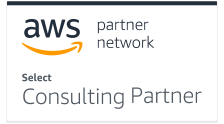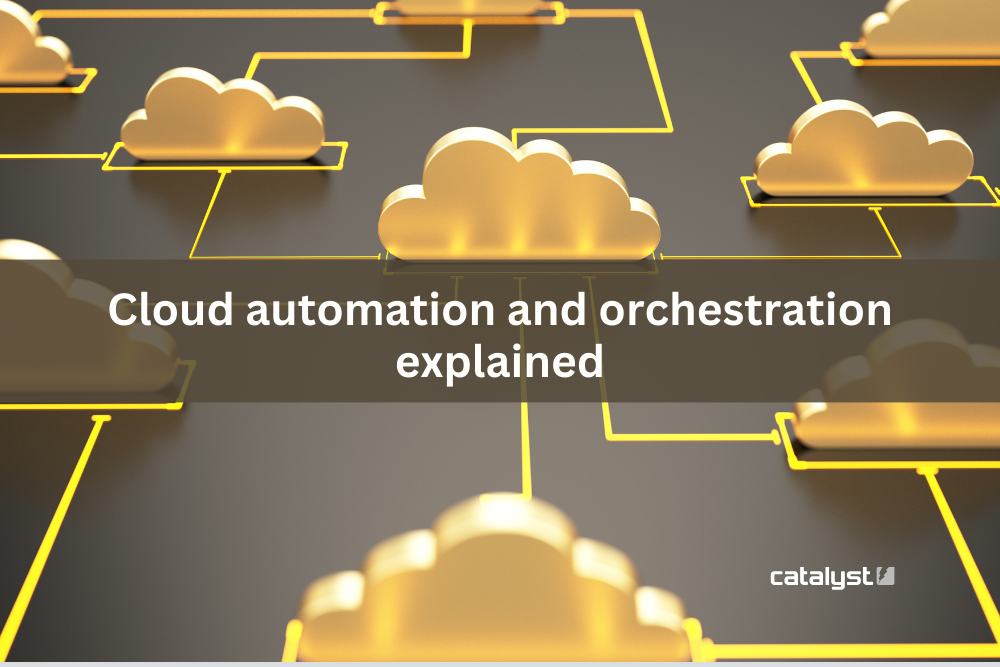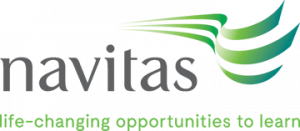What is Cloud Automation and Orchestration?
One great thing about hosting in the cloud is that there are many more automation and management tools available for your sites and applications. Most layers of a cloud solution technology stack have automation workflows built-in and infrastructure teams do take advantage of these functions for a more streamlined, consistent and systematic operation.
In addition to automating tedious, lengthy tasks – freeing up time for us humans to do more valuable work – many benefits are derived from achieving a repeatable workflow outcome that comes with automation; as dependable outcomes lead to a trustworthy solution build, systems stability and a consistently applied security policy.
‘Complex requirements’ is a good thing.
The complexity of enterprise business transformation and cloud provisioning has increased. This is especially true for multi-cloud, hybrid deployments, where dozens of automations are required to span the development, test and release processes associated with big data and devOps.
Tasks, such as synchronising automations across workloads become complex when faced with multiple environments to coordinate. In addition, when you introduce multiple SaaS services from different vendors, automations can introduce real business risks.
This may sound burdensome but thanks to complex requirements, cloud hosting and service providers are challenged to continuously improve their platforms and processes which benefits the wider community of organisations dependent on cloud solutions.
Over the years, cloud automation tools have grown in sophistication and number and that’s a good thing!
Cloud orchestration – think of it as a conductor for an orchestra.
Cloud orchestration takes automation to the next level and is super helpful when it comes to multi-cloud, heterogeneous environment. Just like an orchestra, the conductor sets the tempo, coordinates all the moving parts and makes sure the band plays in harmony.
The conductor role is what we term cloud orchestration, with each musician being a specific cloud automation. Orchestration introduces end-to-end automation of service provision, change, scaling and management, across complex multi-cloud environments.
Catalyst IT approach to cloud orchestration.
Catalyst’s approach to cloud orchestration takes advantage of the underlying capabilities of IaaS and SaaS service provision. This enables customers to fully automate their deployment process, while making sure automation workflows are properly synchronised for smooth and consistent outcomes (even without native platform or infrastructure integrations).
Orchestration thus removes the administrative complexity of trying to coordinate dozens (sometimes hundreds) of scripts running in multiple environments, where script dependencies require one successfully completing before another begins to ensure success.
Cloud orchestration provides delivery assurance to clients and is now the method by which mature managed service providers (MSPs) build all aspects of their deployments, even building these sorts of automation workflows into DevOps and continuous integration and deployment (CI/CD) cycles.
The Benefits!
Some of the benefits of cloud automation and orchestration include:
Provide ability for System Administrators to build comprehensive and reliable deployment solutions.
Orchestrating workflows means System Administrators can trigger automations via programmatic interfaces (APIs) using event driven architecture. By using schedulers, it’s possible to monitor the state of each deployment workflow and production systems, while automatically triggering administration tools and script based on alarms.
As a result, the system administrators gain new levels of visibility into their systems which can boost their performance, reliability and security as automations are targeted at threat management, containment and even recovery.
By leveraging cloud orchestration, clients can finally realise all the benefits of cloud-based efficiencies in service provision, arriving at the panacea where they implement end user self-service provisioning of resources.
Increased operational efficiency
Orchestration tools offer significant efficiency improvements in the management of repetitive tasks through automation.
What was once a relatively straightforward task, such as applying critical security patches, can now be complex and time consuming in a heterogeneous cloud environment, since patches need to be packaged, tested, and deployed across far more target nodes within cloud solutions. Orchestration puts the power back in the hands of the MSP, since they would, in this case, package the patch once and leave the orchestration platform and predefined workflows to do the rest.
Tasks, such as patching, become the building blocks of an end-to-end process for automating service management, with integrations into management processes such as change management, asset management, capacity management and security management.
The ability to integrate with IT service management tools drives service level improvements across every aspect of running a cloud infrastructure, supporting other business processes such as product research, product development and even marketing.
Supporting DevOps initiatives
Software development teams that are striving for continuous deployment and are operating in cloud-based environments can benefit significantly from cloud orchestration software tools as they help automate the deployment process.
DevOps teams have long sought automation tools to help improve the consistency of their software development and delivery process, using automated builds and automated tests to speed up deployment. By integrating cloud orchestration with an organisation’s devOps workflows, development teams can achieve better outcomes in providing updates, security patches, and improving accounting and audit through better log management.
Automating infrastructure provisioning, including servers, networks and security helps developers focus on their core value proposition – that of designing and delivering solutions that meet or exceed their clients’ needs.
Enhanced security and visibility
With the complexity of running cloud environments, an increasing number of security breaches have shown that it is too easy to overlook simple configuration errors that expose sensitive data. Cloud orchestration improves this situation by ensuring all the right configurations are applied to all instances of the cloud solution. Additional automation tools can also scan every aspect of the solution and assess compliance.
Orchestration platforms can fully automate your end-to-end security compliance process. They introduce workflows that will collect and analyse application accounting information, archive operating system event logs and integrate with security tools to add automated remediation or threat management, such as introducing temporary geo-blocks in firewalls if security triggers occur e.g. multiple attempts to log into a cloud workload from an overseas location.
Explore Managed Services with Catalyst
Case study – cloud orchestration of 40+ Moodle sites
Catalyst undertakes consulting and management engagements for cloud managed service delivery across all the major cloud providers. AWS is the benchmark, however, both Azure ad Google Compute Engine offer powerful functionality for Enterprise application delivery. We also work with the OpenStack platform, such as the Catalyst Cloud in New Zealand.
The Catalyst team use cloud orchestration tools in every cloud deployment. With a wealth of experience in both automation and orchestration workflow development, we’d love to support your organisation’s cloud transformation journey.

You may also like:
Understanding managed services in the cloud.
Are you paying enough attention to your AWS spend? A few tips on how you could save thousands.
Cloud computing – risk and mitigation.
Data protection with cloud backup as a service.
Protect your enterprise Moodle with 24/7 support from Catalyst.



